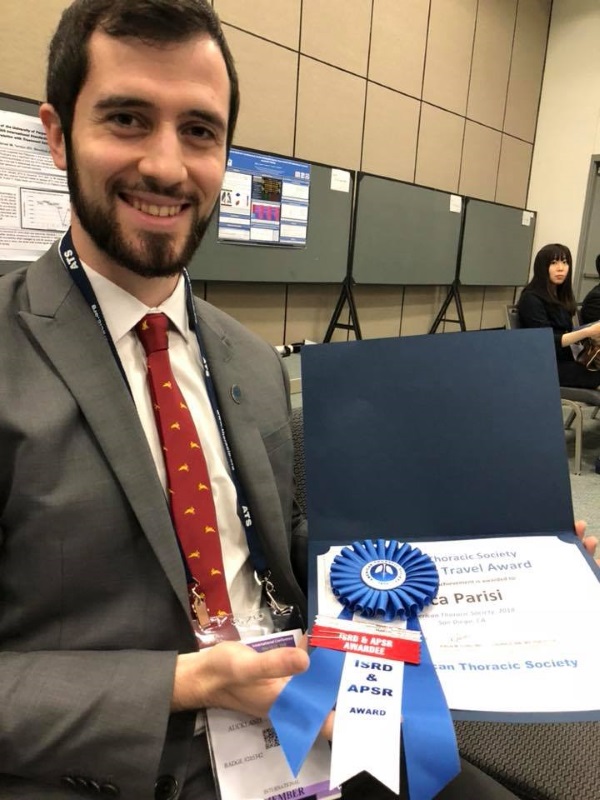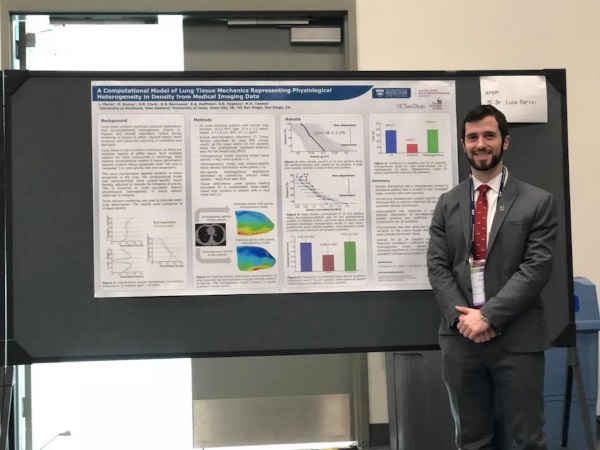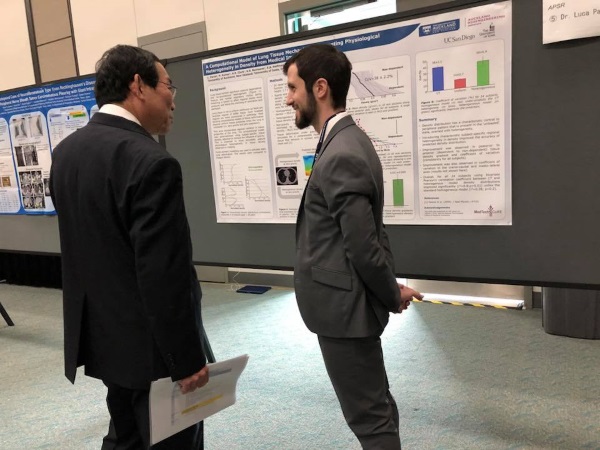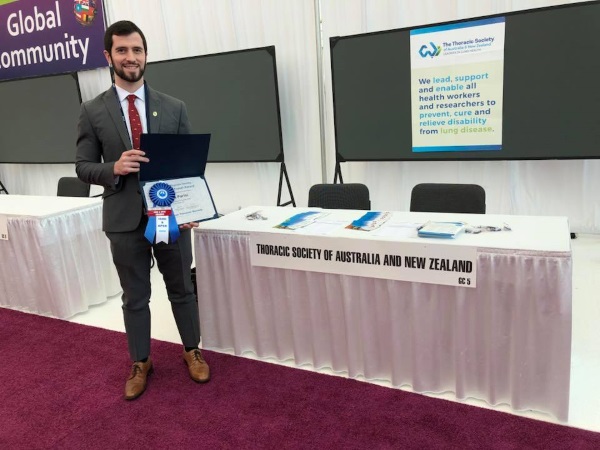Luca Parisi
3rd-year PhD student in Bioengineering, Auckland Bioengineering Institute (ABI), University of Auckland, New Zealand
APSR/ISRD Session at the ATS International Conference 2018 - post-session report
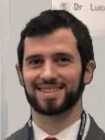
I was awarded a Young Investigator Award by the Asian Pacific Society of Respirology (APSR) at the American Thoracic Society (ATS) 2018 International Conference to present the findings obtained as a part of the Ph.D. project supervised by Professor Merryn Tawhai and accepted in the form of a scientific abstract at the conference. The aim of the conference was to provide a platform for discussions on pulmonary physiology and respiratory medicine, basic and clinical research, as well as scientific and translational research, such as ours, and concepts, methods, algorithms and applications of imaging systems and computational modelling to improve lung health worldwide.
Our research carried out in collaboration with Professor Susan Hopkins and her Pulmonary Imaging Laboratory at the University California, San Diego, incorporates gold standard and novel imaging systems of lung structure and function, state-of-the-art, subject-specific computational and (patho)physiological modelling, advanced statistical analyses, lung tissue biomechanics, and the use of advanced mathematical and biophysical techniques to model, understand and define normal lung physiology and pathophysiology. We presented findings on a novel algorithmic implementation to improve the accuracy of a state-of-the-art computational model of lung tissue biomechanics (Tawhai et al., 2009) in capturing the underlying heterogeneity in lung tissue density from imaging systems to improve prediction of lung tissue deformation and lung tissue density distributions under gravity loading. This approach represents a first step towards developing a more comprehensive computational model to represent and predict pathophysiological heterogeneity in lung tissue deformation and lung tissue density distribution as well, e.g., because of pulmonary oedema and lung injury.
If you are interested in knowing more about our research study, please check the following: www.researchgate.net/ publication/ 325415247_A_Computational_ Model_of_Lung_Tissue_Mechanics_ Representing_Physiological_ Heterogeneity_in_Density_ from_Medical_Imaging_Data_ in_Healthy_Lungs
As a Medical Engineer, it is important to network and discuss our work with professionals using imaging systems and computational modelling to augment pulmonary physiology and respiratory medicine, to discuss new advances in these technologies and new applications where our research can be applied to improve the lung health and clinical outcomes of as many patients as possible worldwide. My aspirations of the conference were to gain an appreciation of the research currently undertaken in translational research applied to lung physiology and respiratory medicine, network with professionals in both research and clinical fields, and present our study from my Ph.D. research project carried out at the Auckland Bioengineering Institute (ABI), University of Auckland.
The scientific programme comprised keynote talks, podium/oral presentations, mini-oral presentations (three-minute long), poster presentations, such as the one I had the honour to give, and interactive sessions with e-posters. The sessions spanned a range of topics related to pulmonary physiology and respiratory medicine with an emphasis on novel application to aid diagnosis and treatment of several pulmonary and respiratory pathologies, as well as medical technologies to improve lung health.
I am very thankful to have been selected as a Young Investigator Awardee by the APSR at the conference, and I would like to thank the ATS President, Professor Marc Moss, the APSR President, Professor Kwun Fong, and the Director of the Shanghai Respiratory Research Institute, Professor Chunxue Bai for having selected me amongst the awardees.
Learning from the constructive discussions I had at the conference with doctors, healthcare professionals, professors, lecturers and researchers much more experienced than me attending my poster presentation and eager to learn more about our research, has been a memorable honour.
It generated a lot of interest and I gained several international contacts, with both hospitals and universities overseas, who showed a keen interest in applying computational modelling techniques to augment their current diagnostic and treatment capabilities.
Attendance at this conference gave me the opportunity to gain further experience in presenting my research. The opportunity to network with like-minded professionals in the field was invaluable, as it was that of sharing our advancements and working together to improve lung health worldwide.
I hope my contributions to the conference raised the awareness of APSR, the high profile of Lung Computational Modelling Research at the Auckland Bioengineering Institute (ABI), University of Auckland and New Zealand, and the high profile of the Pulmonary Imaging Research at the University California, San Diego (USA).
I would like to thank my main supervisor, Professor Merryn Tawhai, for being an inspiration as a leading researcher in the field and for giving me the opportunity to carry out this Ph.D. research work at the world-renowned Auckland Bioengineering Institute (ABI), University of Auckland (New Zealand), and all my Ph.D. supervisors, advisors and colleagues for their help and support.
Dulcis in fundo, I would like to thank the University of Auckland and the Medical Technologies Centre of Research Excellence (MedTech CoRE) from New Zealand, the University California, San Diego and the National Institutes of Health (NIH) from the USA for their contribution to make my attendance to this conference possible.
This project is funded by: Flagship 1 from the Medical Technologies Centre of Research Excellence (MedTech CoRE), New Zealand, and National Institutes of Health (NIH), United States (NIH 1R01HL119201).
